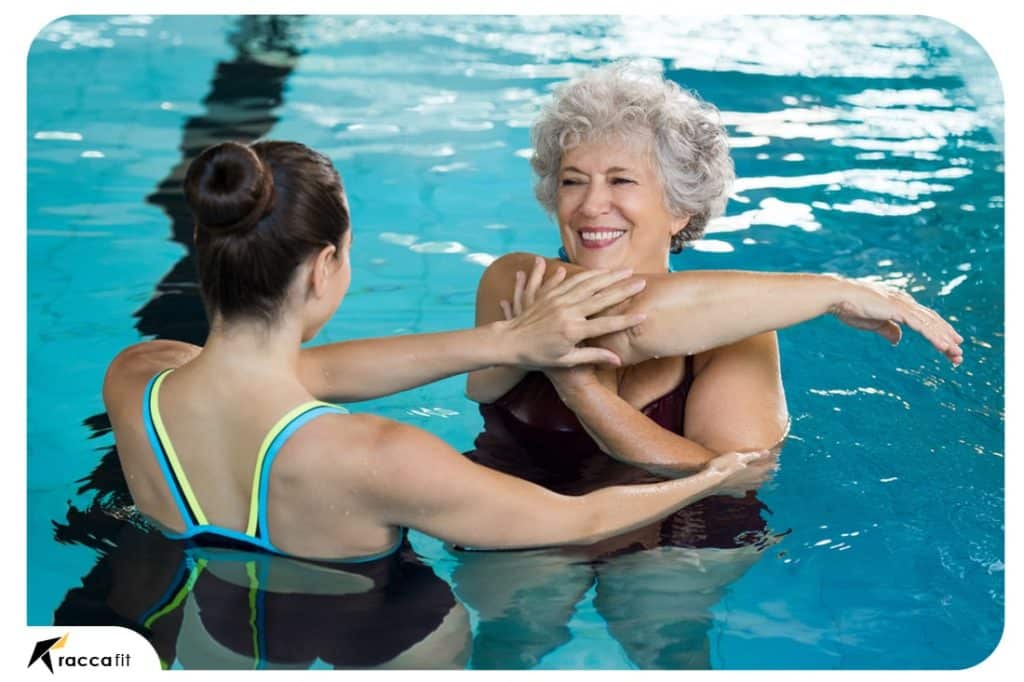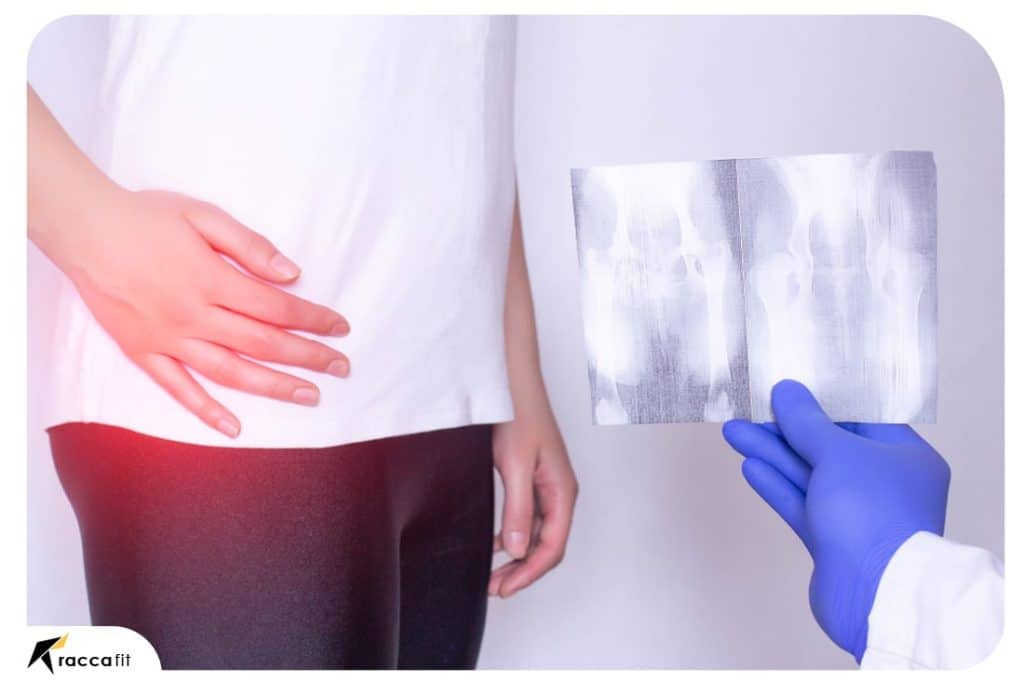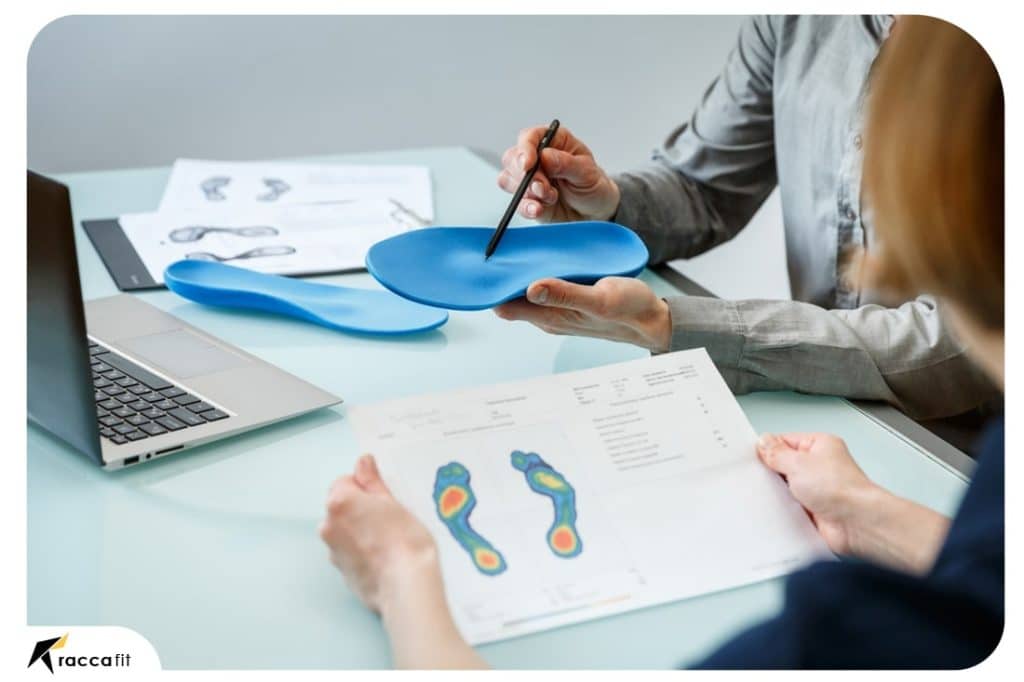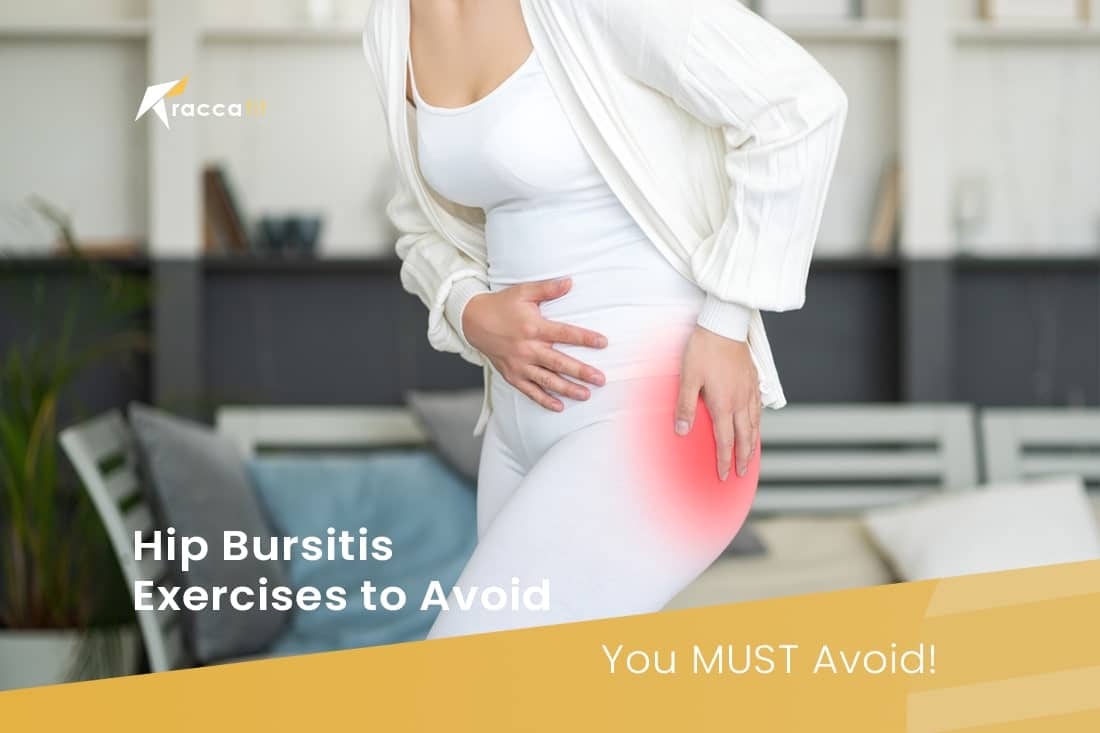Hip bursitis is a condition causing discomfort and inflammation in the bursae, small fluid-filled sacs surrounding the hip joint. Managing hip bursitis necessitates a nuanced approach, especially regarding the selection of appropriate exercises. Understanding the significance of avoiding specific exercises to manage hip bursitis is paramount in mitigating symptoms and ensuring a more comfortable, less symptomatic experience for individuals dealing with this condition. This article delves into the various exercises and activities to steer clear of, offering insight into low-impact alternatives and lifestyle adjustments essential for coping with hip bursitis while maintaining an active and healthy lifestyle.
Understanding Hip Bursitis
Hip bursitis can stem from various factors, including trauma, overuse, or underlying conditions such as arthritis. The main symptoms of hip bursitis include localized pain, tenderness over the affected area, and swelling. Discomfort might be particularly prominent when lying on the affected side, climbing stairs, or performing physical activities like walking or running. Occasionally, the pain may radiate down the thigh or towards the knee.
The Role of Exercises in Hip Bursitis
Exercises, while essential for maintaining overall health, play a critical role in managing hip bursitis. However, individuals need to be mindful of the types of exercises they engage in. High-impact activities, including running or jumping, can intensify the condition by adding increased stress on the bursae. Moreover, movements involving sudden twisting or deep hip flexion can further irritate and inflame the bursae.
Exercises to Avoid
It’s crucial to steer clear of specific exercises and movements that could potentially worsen hip bursitis. High-impact exercises like running, jumping, or high-intensity aerobics should be substituted with gentler, low-impact alternatives. Additionally, abrupt pivoting, deep squats, or lunges should be avoided as they can exacerbate the irritation and inflammation of the bursae, leading to increased pain and discomfort.

Low-Impact Alternative Exercises
Embracing low-impact exercises provides an opportunity to maintain fitness without worsening hip bursitis. Water-based activities, such as swimming or aqua aerobics, are excellent choices, as they reduce pressure on the joints while providing an effective workout. Cycling is another low-impact alternative that engages the lower body without placing excessive strain on the hips. Modified yoga or Pilates programs focusing on gentle stretches and controlled movements can improve flexibility and strength without causing discomfort. We can help you to build a workout plan tailored to your goals, preferences, schedule, and available equipment in this page.
Importance of Consulting a Professional
Seeking guidance from a healthcare professional or a physical therapist is pivotal in effectively managing hip bursitis. These experts can recommend suitable exercises and create a personalized plan to manage the condition. Physical therapists may suggest specific stretches, movements, and strength-building exercises tailored to the individual’s condition and limitations.
Lifestyle Modifications for Hip Bursitis
Lifestyle adjustments can significantly impact the experience of hip bursitis. Ergonomic modifications, such as using cushions or supports while sitting or sleeping, can alleviate pressure on the hips. Maintaining a healthy weight is also crucial to decrease stress on the hips and help manage the condition. Additionally, using assistive devices like canes or walkers can reduce pressure on the affected joint.
Prevention Tips for Hip Bursitis
Preventing the exacerbation of hip bursitis involves adopting certain practices. A proper warm-up routine before exercising prepares the body and reduces the risk of injury. Avoiding sudden, intense activities that strain the hip joint, and paying attention to the body’s signals can prevent overexertion and the worsening of the condition.
Raising Awareness about Hip Health
Increasing awareness about hip health and conditions like bursitis is critical. Early diagnosis and intervention significantly impact the management of hip bursitis. Educating individuals about preventive measures, suitable exercises, and the importance of seeking medical advice at the onset of symptoms can empower them to take proactive steps toward managing their condition.

Impact of Ignoring Exercise Cautions
Disregarding exercise cautions can lead to increased pain, inflammation, and further aggravation of the condition, potentially causing chronic hip bursitis and limiting daily activities. Ignoring the precautions can lead to prolonged discomfort and hinder the individual’s quality of life.
Case Studies and Testimonials
Real-life experiences of individuals managing hip bursitis can offer insights and encouragement to others dealing with similar challenges. Learning from their success stories and understanding how they’ve adapted their exercise routines and made lifestyle changes can be inspirational and informative.
Myth Debunking
There are various myths surrounding hip bursitis that need clarification. For instance, a common misconception is that complete rest is the solution. While rest is necessary for healing, complete immobility can weaken muscles and delay recovery. Another myth is that only intense exercises are effective. In reality, gentle, low-impact exercises can be equally beneficial without aggravating the condition.
Holistic Approaches for Hip Health
A holistic approach to managing hip bursitis encompasses exercise modifications, nutrition, and supplementation. Adequate intake of nutrients supporting bone and joint health, such as calcium, vitamin D, and omega-3 fatty acids, plays a significant role in managing the condition. Additionally, practices like mindfulness and meditation can help manage pain and stress related to the condition.
Coping Strategies for Hip Bursitis
Managing a chronic condition like hip bursitis requires more than physical adaptations. Implementing coping strategies to handle the emotional and mental toll of living with ongoing pain can significantly improve one’s quality of life. Engaging in activities that bring joy and a sense of accomplishment, and seeking support from friends, family, or support groups, can positively impact the emotional well-being of individuals with hip bursitis.

Managing Pain and Discomfort
Non-Pharmacological Pain Management Techniques
Apart from medications, non-pharmacological methods like physical therapy, specific exercises, and stretching can alleviate stress on the bursae, providing relief. Techniques such as ultrasound therapy or corticosteroid injections might be recommended by healthcare professionals to manage pain and inflammation.
Heat and Cold Therapies for Pain Relief
Heat and cold therapies play a pivotal role in managing pain associated with hip bursitis. Applying a heat pack or taking a warm bath can relax the muscles and alleviate stiffness. Conversely, cold compresses or ice packs can reduce inflammation and provide relief.
Role of Rest and Activity Modification in Pain Management
Balancing rest and activity modification is essential in managing pain. Rest facilitates the healing process, yet prolonged inactivity can lead to muscle weakening and joint stiffness. It’s crucial to find a balance by modifying activities to reduce pressure on the hip joint.
Stress Reduction and Its Impact on Pain Perception
Stress can exacerbate pain perception. Engaging in stress-relieving activities like yoga, meditation, or deep breathing exercises can help manage pain by reducing stress and promoting relaxation.
Innovative Pain Relief Strategies: TENS and Acupuncture
Innovative strategies like Transcutaneous Electrical Nerve Stimulation (TENS) or acupuncture have shown promise in managing chronic pain. TENS devices deliver small electrical currents to nerve fibers, disrupting pain signals. Acupuncture involves the insertion of fine needles into specific points in the body to alleviate pain.

Dietary Considerations for Hip Bursitis
Anti-Inflammatory Diet: Impact on Joint Health
An anti-inflammatory diet rich in fruits, vegetables, whole grains, and healthy fats can assist in managing hip bursitis. Foods high in omega-3 fatty acids, like salmon and flaxseeds, possess anti-inflammatory properties and can help reduce inflammation in the body.
Essential Nutrients for Supporting Joint Function
Nutrients such as calcium, vitamin D, and magnesium are vital for bone and joint health. Calcium contributes to bone strength, while vitamin D aids in calcium absorption. Magnesium plays a role in maintaining healthy muscles and joints.
Hydration and Its Role in Managing Hip Bursitis
Proper hydration is crucial for joint health. Water aids in cushioning and lubricating the joints. Staying well-hydrated helps maintain the synovial fluid that cushions the hip joint, reducing friction and discomfort.
Supplements: Omega-3 Fatty Acids and Their Effectiveness
Omega-3 fatty acids, found in fish oil or flaxseed supplements, have anti-inflammatory properties. These supplements can reduce inflammation in the body, potentially alleviating symptoms associated with hip bursitis. In this page we can provide a plan customized to meet your exact nutritional needs, keep an eye for any food allergies, and create a meal plan no matter the dietary requirement.
Herbal Remedies and Their Role in Alleviating Joint Pain
Some herbal remedies like turmeric and ginger have natural anti-inflammatory properties. Including these herbs in one’s diet or using them as supplements might contribute to reducing inflammation and easing joint pain.
Advanced Exercise Modifications
When dealing with hip bursitis, advanced exercise modifications are crucial to ensure that individuals can continue physical activities without exacerbating their condition. These modifications go beyond the typical low-impact exercise alternatives and focus on adapting movements to avoid further stress on the hip joint. For instance, in aerobics, low-impact movements like side steps or modified jumping jacks can replace higher-impact exercises. In weight training, using lighter weights and focusing on controlled movements can prevent undue strain on the hips while maintaining muscle strength.
Hip Bursitis and Daily Activities
Understanding how hip bursitis impacts daily activities is essential for individuals navigating the condition. Simple tasks like climbing stairs, standing for extended periods, or even sitting for too long can trigger discomfort and pain. Adjusting daily activities by taking breaks when standing or sitting, using supportive cushions, or avoiding activities that require extended hip flexion, such as squatting, can help manage hip bursitis symptoms during daily routines.
Professional Treatment Options for Hip Bursitis
Professional treatment options for hip bursitis range from conservative methods to more invasive interventions. Conservative treatments may include physical therapy, where a therapist designs an exercise plan to strengthen the muscles around the hip joint and reduce pressure on the bursae. In some cases, corticosteroid injections might be administered to reduce inflammation. If these methods prove ineffective, surgical options to remove the bursa might be considered, although this is typically a last resort.
Managing Hip Bursitis at Work
Navigating hip bursitis at the workplace requires certain adjustments to ensure comfort and productivity. Simple changes such as using ergonomic chairs, incorporating standing desks, or placing supportive cushions on chairs can relieve pressure on the hips. Taking regular breaks to stretch and move around, along with adjusting work tasks to avoid prolonged hip stress, can significantly alleviate discomfort while working.

The Role of Footwear in Hip Bursitis
Footwear plays an often-overlooked yet critical role in managing hip bursitis. Shoes with proper cushioning and arch support can help distribute body weight evenly, reducing strain on the hips. Avoiding high heels and shoes with inadequate support is advisable as they can alter gait and increase pressure on the hip joint. Orthotic inserts or custom-made shoe inserts can also provide additional support and stability, promoting better hip health. Running shoes with cushioned soles and adequate shock absorption or sneakers designed for stability and support can aid in reducing pressure on the hips. Consulting with a podiatrist or footwear specialist can assist in finding the most suitable footwear to manage hip bursitis.
Implementing Advanced Exercise Techniques
Advanced exercise techniques involve taking low-impact exercises to the next level by incorporating more nuanced movements that engage various muscle groups while minimizing strain on the hips. For instance, in yoga, modifying poses to reduce hip flexion or employing props for support can help individuals continue their practice while managing hip bursitis. Advanced aqua aerobics techniques may involve increasing resistance using water weights while avoiding deep joint stress.
Adapting Work Tasks for Hip Bursitis
Adapting work tasks for hip bursitis involves making alterations to specific job responsibilities that might otherwise exacerbate the condition. For instance, using tools or devices to reduce heavy lifting or finding alternative methods to perform tasks that require prolonged standing or sitting can alleviate discomfort. Ergonomic workplace adjustments, such as using supportive chairs or adjusting desk heights, can make a substantial difference in reducing hip strain at work.
Surgical Interventions for Severe Hip Bursitis
In severe cases of hip bursitis that do not respond to conservative treatments, surgical interventions may be considered. Surgical removal of the bursa, known as bursectomy, is a procedure where the inflamed bursa is excised. However, this is generally reserved for extreme cases when other treatments have failed, as it involves potential risks and a recovery period.
Using Assistive Devices at Work for Hip Bursitis
Using assistive devices at work can significantly improve comfort and reduce hip strain. Tools like ergonomic chairs, standing desks, or assistive seating cushions can provide the necessary support and comfort during work hours. Additionally, walking aids like canes or walkers might help alleviate pressure on the hip joint, making movement easier and less painful.
Conclusion
Understanding the exercises to avoid and implementing low-impact alternatives can significantly contribute to managing hip bursitis. Taking a proactive approach, seeking professional guidance, and making necessary lifestyle changes are essential steps in improving the condition and quality of life for individuals dealing with hip bursitis.
FAQs
- Can hip bursitis be cured with exercises alone? While exercises are essential in managing hip bursitis, a comprehensive approach involving professional guidance, lifestyle modifications, and sometimes medical intervention is often necessary for effective management.
- Are there specific age groups more prone to hip bursitis? Hip bursitis can affect individuals of any age, but it’s more commonly observed in adults as they age, particularly in individuals over 40.
- How soon can one expect relief from pain by avoiding certain exercises? Relief from pain varies among individuals. By avoiding aggravating exercises, individuals might experience reduced discomfort over time, usually within a few weeks to a couple of months, depending on the severity of the condition and adherence to recommended modifications.
- What are the risks of not paying attention to hip bursitis exercise precautions? Ignoring exercise precautions can lead to increased pain, inflammation, and further aggravation of the condition, potentially causing chronic hip bursitis and limiting daily activities.
- Can physical therapy alone help manage hip bursitis effectively? Physical therapy, when tailored to the individual’s condition, can significantly aid in managing hip bursitis. However, a holistic approach involving lifestyle modifications, professional guidance, and sometimes medical interventions might be necessary for comprehensive management.








